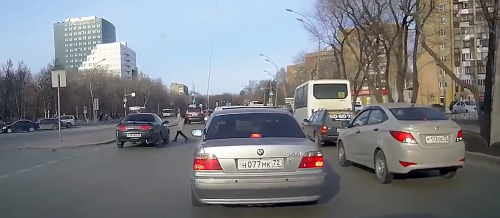☠️ Dangers of pedestrians cutting through traffic
Reduced visibility: When pedestrians cut through traffic, they may not be visible to drivers, particularly if they are walking between parked cars or in low-light conditions. This can increase the risk of accidents, particularly if drivers are not expecting pedestrians to cross their path.
Speeding vehicles: Drivers may be traveling at high speeds, particularly on busy roads, making it difficult for them to stop quickly if they encounter pedestrians crossing their path.
Distracted driving: Drivers may be distracted by their phone, navigation system, or other factors, making them less aware of their surroundings and increasing the risk of accidents.
Lack of designated crossing areas: When pedestrians cut through traffic, they may not be crossing at designated crosswalks or intersections, increasing the risk of accidents and confusion for drivers.
Unexpected movements: Pedestrians cutting through traffic may make sudden and unexpected movements, such as running or changing direction, making it difficult for drivers to anticipate their movements.
To avoid these dangers, pedestrians should always use designated crossing areas, such as crosswalks and intersections, and obey traffic signals and signs.
Pedestrians should also be aware of their surroundings, make eye contact with drivers to ensure they are seen, and avoid using their phone or other electronic devices while crossing the road.
By following these guidelines, pedestrians can reduce the risk of accidents and ensure their safety while walking on or crossing the road.
⧋

